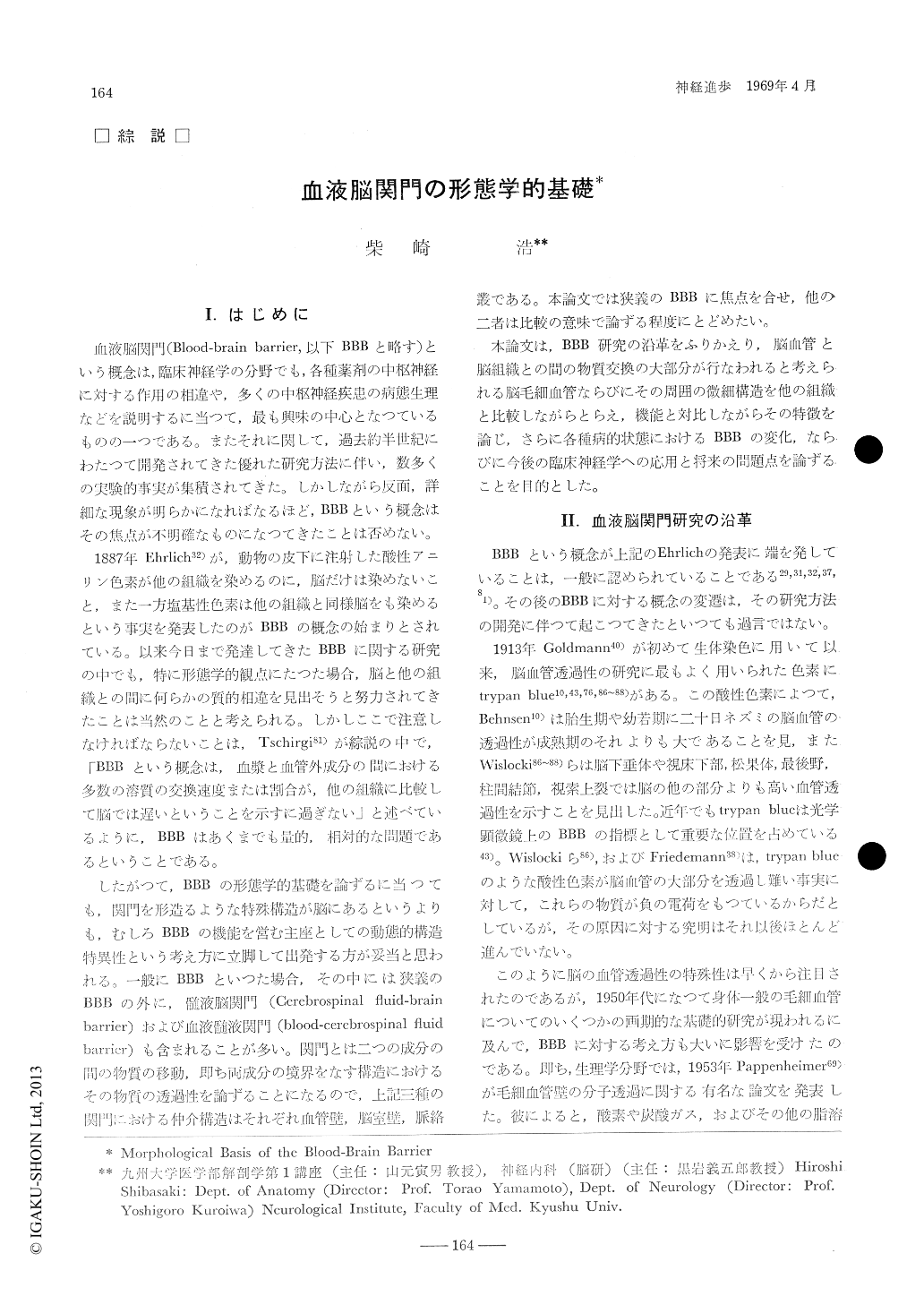Japanese
English
- 有料閲覧
- Abstract 文献概要
- 1ページ目 Look Inside
I.はじめに
血液脳関門(Blood-brain barrier,以下BBBと略す)という概念は,臨床神経学の分野でも,各種薬剤の中枢神経に対する作用の相違や,多くの中枢神経疾患の病態生理などを説明するに当つて,最も興味の中心となつているものの一つである。またそれに関して,過去約半世紀にわたつて開発されてきた優れた研究方法に伴い,数多くの実験的事実が集積されてきた。しかしながら反面,詳細な現象が明らかになればなるほど,BBBという概念はその焦点が不明確なものになつてきたことは否めない。
1887年Ehrlich32)が,動物の皮下に注射した酸性アニリン色素が他の組織を染めるのに,脳だけは染めないこと,また一方塩基性色素は他の組織と同様脳をも染めるという事実を発表したのがBBBの概念の始まりとされている。以来今日まで発達してきたBBBに関する研究の中でも,特に形態学的観点にたつた場合,脳と他の組織との間に何らかの質的相違を見出そうと努力されてきたことは当然のことと考えられる。しかしここで注意しなければならないことは,Tschirgi81)が綜説の中で,「BBBという概念は,血漿と血管外成分の間における多数の溶質の交換速度または割合が,他の組織に比較して脳では遅いということを示すに過ぎない」と述べているように,BBBはあくまでも量的,相対的な問題であるということである。
The blood-brain barrier (BBB), the concept of which originated from Ehrlich's observation in 1880's, has drawn much attention since the electron microscope method was introduced in this field in 1950's. Generally speaking, the cerebral capillaries are considered to show little difference from those in other organs. The capillary wall of the mammalian brain consists of the innermost endothelial cell layer, the basement membrane and the pericapillary cellular investment. The endothelial cells of the cerebral capillaries have no fenestrations, and their intercellular junctions are occluded by tight junctions.

Copyright © 1969, Igaku-Shoin Ltd. All rights reserved.


